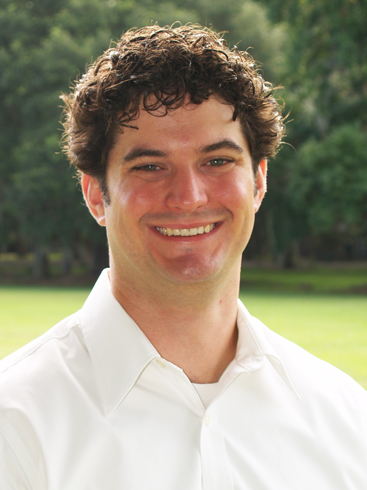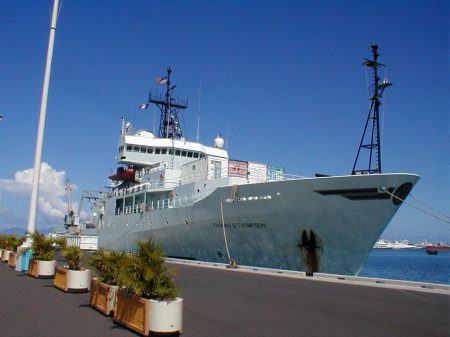Skidaway Institute scientist Clifton Buck has just begun a 57-day research cruise that will take him from Ecuador to Tahiti. He will be updating this blog with accounts of his trip.
Ahoy There!
 I am will be spending the next two months aboard the University of Washington’s scientific Research Vessel Thomas Thompson My shipmates and I are travelling from Ecuador to Tahiti as part of an international effort called GEOTRACES to better characterize the sources, sinks, and biogeochemical cycles of trace elements and isotopes (TEIs) in the oceans of the world. Trace elements are present in seawater at concentrations that are often far less than a part per billion but often play important roles in the ocean as nutrients, contaminants, and process tracers. The research implications will help us understand areas of study including climate change, the carbon cycle, ocean ecosystems, and environmental contamination.
I am will be spending the next two months aboard the University of Washington’s scientific Research Vessel Thomas Thompson My shipmates and I are travelling from Ecuador to Tahiti as part of an international effort called GEOTRACES to better characterize the sources, sinks, and biogeochemical cycles of trace elements and isotopes (TEIs) in the oceans of the world. Trace elements are present in seawater at concentrations that are often far less than a part per billion but often play important roles in the ocean as nutrients, contaminants, and process tracers. The research implications will help us understand areas of study including climate change, the carbon cycle, ocean ecosystems, and environmental contamination. 
Our route will take us through three distinct regions of the eastern Pacific Ocean, each with their own distinct chemical characteristics. We begin the highly productive waters off the coast of Peru. This region is known as one of the finest fisheries in the world due ocean currents that bring nutrient rich waters to the surface by a process called upwelling. These nutrients support a great deal of biological production in depths that light can reach otherwise known as the photic zone. However, when the microscopic plants and animals living in the photic zone die they sink towards the bottom. As they sink, their organic matter is remineralized by respiration which uses the dissolved oxygen in the surrounding waters. The result is an area within the interior of the ocean that is very low in oxygen called the oxygen minimum zone or OMZ. Similar areas can be found off the coasts of Oregon and Louisiana in the United States. The low oxygen concentrations not only impact the plants and animals in the area but also affect the cycling of the trace elements as well.
Next we will study the hydrothermal zone at the East Pacific Rise. The rise is an area of active volcanism on the sea floor and is a source for both particulate and dissolved metals to the interior of the ocean. At a hydrothermal zone, water within the ocean bottom can come into contact with magma and become incredibly hot. In addition to heat, the magma releases trace elements into the water. This super-heated water is then released through fissures in the crust creating features like “black smokers” which creates a plume of seawater enriched in TEIs. The magnitude of these sources is poorly understood and it is hoped that work on this project will help provide insights into their importance. We also hope to characterize the processes responsible for supply and removal of TEIs with the plume.
Finally, we will traverse the northern edge of the central South Pacific gyre. A central gyre is a system of currents which flow in a circular pattern over thousands of miles. The gyre interior is one of the most nutrient poor (oligotrophic) regions in all of the world’s oceans. In fact, this area contains the bluest water in the world because there is so little living in it.
My role on this project is to collect atmospheric samples. The atmosphere is an important source for trace elements to the surface ocean particularly in areas that are distant from the continental shelf and rivers. In future posts, I will describe the processes and equipment that we use to do this work. I will also try to give a sense of what life is like on a ship at sea for 57 days. Please check back often and leave questions for me in the comments section. I will do my best to answer them.
Thanks for reading!



Hi Cliff
This sounds great. I will share this with my BioResearch students here at Flint Hill and will encourage them to send along some questions.
Hi Mr. Atwood,
I’d love to get some questions! I’m hoping to make at least two posts per week, mostly science but also some “life on a ship” stories.